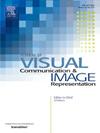Multi-TuneV: Fine-tuning the fusion of multiple modules for video action recognition
IF 2.6
4区 计算机科学
Q2 COMPUTER SCIENCE, INFORMATION SYSTEMS
Journal of Visual Communication and Image Representation
Pub Date : 2025-03-20
DOI:10.1016/j.jvcir.2025.104441
引用次数: 0
Abstract
The current pre-trained models have achieved remarkable success, but they usually have complex structures and hundreds of millions of parameters, resulting in a huge computational resource requirement to train or fully fine-tune a pre-trained model, which limits its transfer learning on different tasks. In order to migrate pre-trained models to the field of Video Action Recognition (VAR), recent research uses parametric efficient transfer learning (PETL) approaches, while most of them are studied on a single fine-tuning module. For a complex task like VAR, a single fine-tuning method may not achieve optimal results. To address this challenge, we want to study the effect of joint fine-tuning with multiple modules, so we propose a method that merges multiple fine-tuning modules, namely Multi-TuneV. It combines five fine-tuning methods, including ST-Adapter, AdaptFormer, BitFit, VPT and LoRA. We design a particular architecture for Multi-TuneV and integrate it organically into the Video ViT model so that it can coordinate the multiple fine-tuning modules to extract features. Multi-TuneV enables pre-trained models to migrate to video classification tasks while maintaining improved accuracy and effectively limiting the number of tunable parameters, because it combines the advantages of five fine-tuning methods. We conduct extensive experiments with Multi-TuneV on three common video datasets, and show that it surpasses both full fine-tuning and other single fine-tuning methods. When only 18.7 % (16.09 M) of the full fine-tuning parameters are updated, the accuracy of Multi-TuneV on SSv2 and HMDB51 improve by 23.43 % and 16.46 % compared with the full fine-tuning strategy, and improve to 67.43 % and 75.84 %. This proves the effectiveness of joint multi-module fine-tuning. Multi-TuneV provides a new idea for PETL and a new perspective to address the challenge in video understanding tasks. Code is available at https://github.com/hhh123-1/Multi-TuneV.
Multi-TuneV:对多个模块的融合进行微调,实现视频动作识别
目前的预训练模型已经取得了显著的成功,但它们通常具有复杂的结构和数亿个参数,导致训练或完全微调预训练模型需要巨大的计算资源,这限制了它在不同任务上的迁移学习。为了将预训练模型迁移到视频动作识别(VAR)领域,最近的研究使用了参数化高效迁移学习(PETL)方法,但大多数方法都是在单个微调模块上进行研究的。对于像VAR这样复杂的任务,单一的微调方法可能无法达到最佳效果。为了解决这一挑战,我们想研究多模块联合微调的效果,因此我们提出了一种合并多个微调模块的方法,即Multi-TuneV。它结合了ST-Adapter、AdaptFormer、BitFit、VPT和LoRA五种微调方法。我们为Multi-TuneV设计了一种特殊的架构,并将其有机地集成到Video ViT模型中,使其能够协调多个微调模块进行特征提取。Multi-TuneV使预先训练的模型能够迁移到视频分类任务中,同时保持更高的准确性,并有效地限制可调参数的数量,因为它结合了五种微调方法的优点。我们在三个常见的视频数据集上进行了广泛的实验,并表明它优于完全微调和其他单一微调方法。当仅更新18.7% (16.09 M)的全微调参数时,SSv2和HMDB51上Multi-TuneV的精度分别比全微调策略提高23.43%和16.46%,分别提高到67.43%和75.84%。验证了多模块联合微调的有效性。Multi-TuneV为PETL提供了新的思路,为解决视频理解任务中的挑战提供了新的视角。代码可从https://github.com/hhh123-1/Multi-TuneV获得。
本文章由计算机程序翻译,如有差异,请以英文原文为准。
求助全文
约1分钟内获得全文
求助全文
来源期刊

Journal of Visual Communication and Image Representation
工程技术-计算机:软件工程
CiteScore
5.40
自引率
11.50%
发文量
188
审稿时长
9.9 months
期刊介绍:
The Journal of Visual Communication and Image Representation publishes papers on state-of-the-art visual communication and image representation, with emphasis on novel technologies and theoretical work in this multidisciplinary area of pure and applied research. The field of visual communication and image representation is considered in its broadest sense and covers both digital and analog aspects as well as processing and communication in biological visual systems.
 求助内容:
求助内容: 应助结果提醒方式:
应助结果提醒方式:


